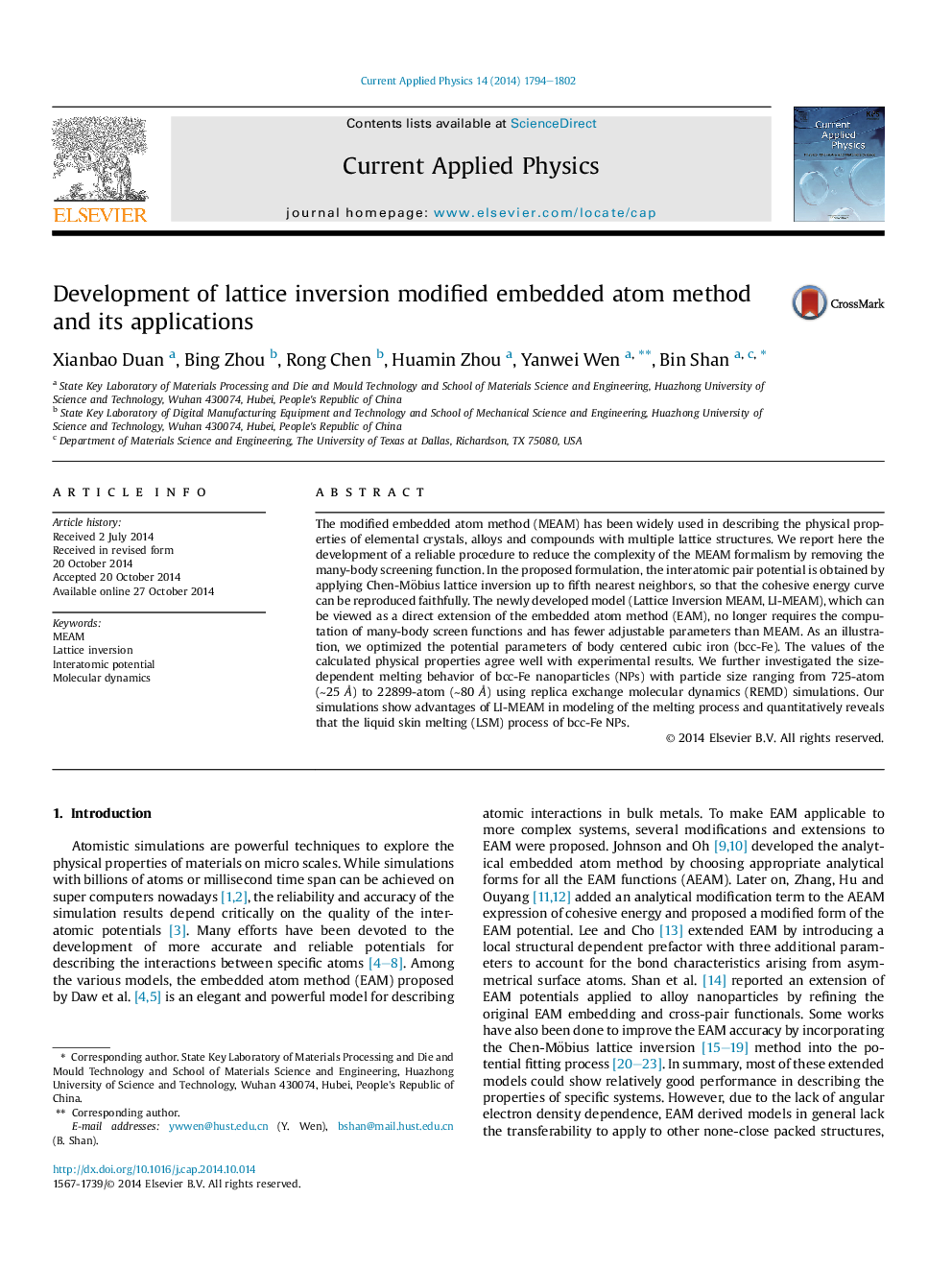| Article ID | Journal | Published Year | Pages | File Type |
|---|---|---|---|---|
| 1785926 | Current Applied Physics | 2014 | 9 Pages |
•We propose a simplified LI-MEAM model by the lattice inversion method.•The developed potential reproduces well various physical properties of bcc-Fe.•LI-MEAM predicts better melting points of nanoparticles than other MEAM variants.
The modified embedded atom method (MEAM) has been widely used in describing the physical properties of elemental crystals, alloys and compounds with multiple lattice structures. We report here the development of a reliable procedure to reduce the complexity of the MEAM formalism by removing the many-body screening function. In the proposed formulation, the interatomic pair potential is obtained by applying Chen-Möbius lattice inversion up to fifth nearest neighbors, so that the cohesive energy curve can be reproduced faithfully. The newly developed model (Lattice Inversion MEAM, LI-MEAM), which can be viewed as a direct extension of the embedded atom method (EAM), no longer requires the computation of many-body screen functions and has fewer adjustable parameters than MEAM. As an illustration, we optimized the potential parameters of body centered cubic iron (bcc-Fe). The values of the calculated physical properties agree well with experimental results. We further investigated the size-dependent melting behavior of bcc-Fe nanoparticles (NPs) with particle size ranging from 725-atom (∼25 Å) to 22899-atom (∼80 Å) using replica exchange molecular dynamics (REMD) simulations. Our simulations show advantages of LI-MEAM in modeling of the melting process and quantitatively reveals that the liquid skin melting (LSM) process of bcc-Fe NPs.
